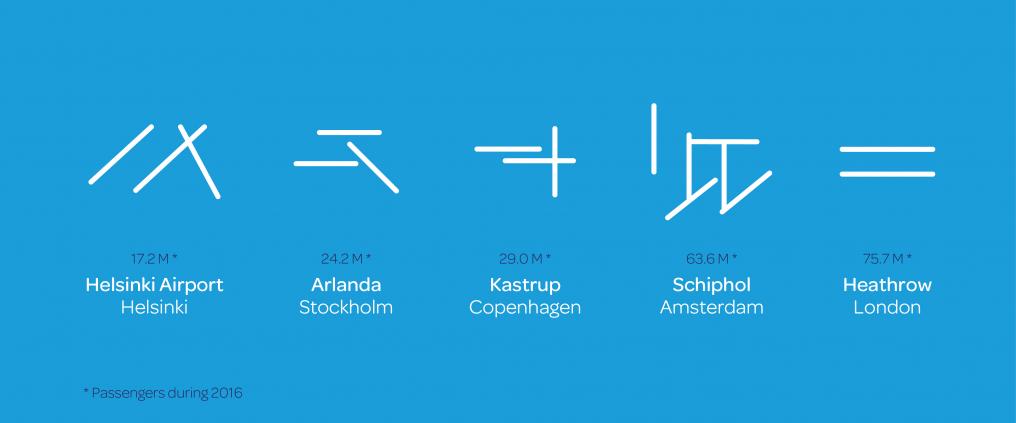1. Helsinki Airport has more runways than London Heathrow
Helsinki Airport has three runways: runways 1 and 3 run parallel to each other from North-East to South-West, whereas runway 2 crosses runway 1 from North-West to South-East. All runways are used for both takeoffs and landings.
The runways are all around three kilometers long, and 60 meters wide. The last of the runways to be taken into use was runway 3, in 2002.
Compared to other European airports of the same size, three runways is a pretty regular number. For instance Stockholm Arlanda and Copenhagen have the same amount, whereas London Heathrow gets by with only two and Amsterdam Schiphol has a total of six. The number of runways usually depends on local weather conditions and noise regulations.
2. Winds and noise are the main factors in how runways are used
The direction for using a runway is chosen based on wind conditions, and runways are aligned to take advantage of prevailing winds as it is safest for planes to take off and land into a headwind.
The runways used for departing and arriving traffic are always chosen together; there are around 20 different combinations that can be used at Helsinki Airport.
In addition to wind, noise is also a factor in how runways are used. Helsinki Airport has a primary runway system: To minimize air traffic noise pollution, flights are primarily directed to take off from runway three towards South-West, and to land on runway 2 from North-West. This is the most common combination in use; around half of all flights leave from runway 3.
Aircraft that only produce little noise can also land towards South on runway 1. During peak hours, landing planes are directed on two parallel runways.
Watch a video of how Helsinki Airport runways are used.
3. Runways are also numbered based on compass bearing
In the international aviation world, runways are always numbered based on their compass bearing. For instance, for Helsinki Airport’s runway 2, which has a compass bearing of 15X degrees, the number is rounded off to 150 and the last digit dropped, so that makes the first number 15. The opposite end of the runway always differs by 180 degrees, so it’s numbered 18 higher or lower – in the case of runway 2 that makes 15+18=33. Thus the international numbering for runway 2 is 15/33.
If there are two parallel runways at an airport, they are identified with a letter: L for left and R for right.
4. Summery runways even in the winter
Snow and ice impair the friction of runway surfaces. With Finavia’s top-notch snowhow and heavy equipment, Helsinki Airport runways are kept in summery conditions, even in the middle of the coldest winter.
The runways are cleared of snow one at a time. Nine or ten brush blower vehicles run side to side on a runway that is roughly 3 km in length and 60 m in width. It takes this crew 11 to 12 minutes to clear one runway from end to end. To avoid aircraft wings getting caught in snow banks forming on the runway edges, they are lowered using 1,000+ hp snowblowers.
The maintenance crew has about 26 different brushing patterns for the runways, selected on the basis of departing and arriving traffic flight directions.
Read more how Finnish airports cope with heavy snowfall and freezing temperatures



